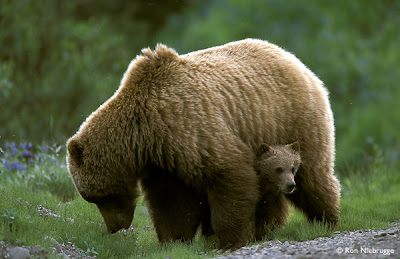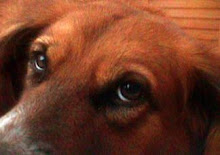Das Bild links zeigt die Situation am 8. Juli: Etwa 40 Prozent des Oberflächeneises auf Grönland ist angetaut (rötlich). Nur vier Tage später ein völlig anderes Bild: Satellitenaufnahmen vom 12. Juli zeigen: Nun sind 97 Prozent der Oberfläche angetaut; die Farbe "rot" bedeutet, hier kam es gewiss zu einem Schmelzprozess, "rosa" aller Wahrscheinlichkeit nach.
Fast die gesamte Oberfläche des grönländischen Eisschilds ist Mitte Juli zumindest angetaut. Das teilte die US-Weltraumagentur NASA mit. Das Ausmaß sei größer als in allen zurückliegenden Jahren, in denen dieser Prozess mit Satelliten beobachtet werde. Die NASA richtet ihren Blick seit mehr als 30 Jahren auf diese Vorgänge.
Die Daten stammen von drei verschiedenen Satelliten. Sie wurden den Angaben zufolge von Fachleuten der NASA und von Universitätsexperten ausgewertet. In einem durchschnittlichen Sommer schmelze das Eis Grönlands natürlicherweise etwa auf der Hälfte der Oberfläche an, heißt es bei der NASA. Es geht aber größtenteils nicht verloren: In großer Höhe gefriert der Hauptanteil des Wasser schnell wieder und nahe der Küste wird ein Teil des Wassers von Eisbarrieren zurückgehalten, sodass nur wenig in den Ozean abfließt.
"Aber in diesem Jahr hat das Anschmelzen an der Oberfläche einen dramatischen Sprung gemacht", heißt es. Den Satellitendaten zufolge taute das Eis innerhalb weniger Tage um den 12. Juli herum auf etwa 97 Prozent der Fläche an. Son Nghiem vom Jet Propulsion Laboratory der NASA im kalifornischen Pasadena hatte Radardaten des "Oceansat-2"-Satelliten der kooperierenden indischen Raumfahrtagentur ISRO ausgewertet. "Das war so außergewöhnlich, dass ich das Ergebnis zuerst infrage gestellt habe: War das real oder ein Datenfehler?"
Die Ergebnisse wurden mit Messgeräten an Bord weiterer Satelliten überprüft, dabei bestätigten sich die hohen Temperaturen über der Eisfläche. Das extrem starke Schmelzen könnte seine Ursache in einer ungewöhnlich warmen Luftschicht haben, die NASA spricht gar von einer Hitzeglocke. Seit Mai gab es mehrere davon, jede stärker als die vorherige. Die zuletzt beobachtete baute sich am 8. Juli auf, am 16. Juli begann sie sich aufzulösen.
Ob es Einflüsse auf die Eisverluste Grönlands gibt, ist unklar
Anders Levermann, Professor am Potsdam-Institut für Klimafolgenforschung (Pik), sagte der Nachrichtenagentur dpa: "Dass wir solche Extremereignisse unter globaler Erwärmung sehen, ist nicht verblüffend und sogar zu erwarten." Erst kürzlich hatten die Pik-Forscher festgestellt, dass die Erderwärmung den Eismassen Grönlands wahrscheinlich stärker zusetzt als bislang angenommen.Ob die aktuellen Ereignisse auch Einfluss auf das Volumen des Eisverlusts in Grönland haben werden, ist noch unklar. Levermann erklärt: "Im Moment können wir die Folgen noch nicht abschätzen. So wissen wir nicht, was so eine extreme Schmelzperiode bedeutet, außer dass in diesem Moment mehr Wasser verloren geht und der Wasserspiegel ansteigt."
Here the NASA text about the phenomenon
Extent of surface melt over Greenland’s ice sheet on July 8 (left) and July 12 (right). Measurements from three satellites showed that on July 8, about 40 percent of the ice sheet had undergone thawing at or near the surface. In just a few days, the melting had dramatically accelerated and an estimated 97 percent of the ice sheet surface had thawed by July 12. In the image, the areas classified as “probable melt” (light pink) correspond to those sites where at least one satellite detected surface melting. The areas classified as “melt” (dark pink) correspond to sites where two or three satellites detected surface melting. The satellites are measuring different physical properties at different scales and are passing over Greenland at different times. As a whole, they provide a picture of an extreme melt event about which scientists are very confident. Credit: Nicolo E. DiGirolamo, SSAI/NASA GSFC, and Jesse Allen, NASA Earth Observatory
For several days this month, Greenland's surface ice cover melted over a larger area than at any time in more than 30 years of satellite observations. Nearly the entire ice cover of Greenland, from its thin, low-lying coastal edges to its two-mile-thick center, experienced some degree of melting at its surface, according to measurements from three independent satellites analyzed by NASA and university scientists.
On average in the summer, about half of the surface of Greenland's ice sheet naturally melts. At high elevations, most of that melt water quickly refreezes in place. Near the coast, some of the melt water is retained by the ice sheet and the rest is lost to the ocean. But this year the extent of ice melting at or near the surface jumped dramatically. According to satellite data, an estimated 97 percent of the ice sheet surface thawed at some point in mid-July.
Researchers have not yet determined whether this extensive melt event will affect the overall volume of ice loss this summer and contribute to sea level rise.
"The Greenland ice sheet is a vast area with a varied history of change. This event, combined with other natural but uncommon phenomena, such as the large calving event last week on Petermann Glacier, are part of a complex story," said Tom Wagner, NASA's cryosphere program manager in Washington. "Satellite observations are helping us understand how events like these may relate to one another as well as to the broader climate system."
Son Nghiem of NASA's Jet Propulsion Laboratory in Pasadena, Calif., was
analyzing radar data from the Indian Space Research Organisation's
(ISRO) Oceansat-2 satellite last week when he noticed that most of
Greenland appeared to have undergone surface melting on July 12. Nghiem
said, "This was so extraordinary that at first I questioned the result:
was this real or was it due to a data error?"
Nghiem consulted with Dorothy Hall at NASA's Goddard Space Flight Center
in Greenbelt, Md. Hall studies the surface temperature of Greenland
using the Moderate-resolution Imaging Spectroradiometer (MODIS) on
NASA's Terra and Aqua satellites. She confirmed that MODIS showed
unusually high temperatures and that melt was extensive over the ice
sheet surface.
Thomas Mote, a climatologist at the University of Georgia, Athens, Ga; and Marco Tedesco of City University of New York also confirmed the melt seen by Oceansat-2 and MODIS with passive-microwave satellite data from the Special Sensor Microwave Imager/Sounder on a U.S. Air Force meteorological satellite.
The melting spread quickly. Melt maps derived from the three satellites showed that on July 8, about 40 percent of the ice sheet's surface had melted. By July 12, 97 percent had melted.
This extreme melt event coincided with an unusually strong ridge of warm air, or a heat dome, over Greenland. The ridge was one of a series that has dominated Greenland's weather since the end of May. "Each successive ridge has been stronger than the previous one," said Mote. This latest heat dome started to move over Greenland on July 8, and then parked itself over the ice sheet about three days later. By July 16, it had begun to dissipate.
Even the area around Summit Station in central Greenland, which at 2 miles above sea level is near the highest point of the ice sheet, showed signs of melting. Such pronounced melting at Summit and across the ice sheet has not occurred since 1889, according to ice cores analyzed by Kaitlin Keegan at Dartmouth College in Hanover, N.H. A National Oceanic and Atmospheric Administration weather station at Summit confirmed air temperatures hovered above or within a degree of freezing for several hours July 11-12.
"Ice cores from Summit show that melting events of this type occur about once every 150 years on average. With the last one happening in 1889, this event is right on time," says Lora Koenig, a Goddard glaciologist and a member of the research team analyzing the satellite data. "But if we continue to observe melting events like this in upcoming years, it will be worrisome."
Nghiem's finding while analyzing Oceansat-2 data was the kind of benefit that NASA and ISRO had hoped to stimulate when they signed an agreement in March 2012 to cooperate on Oceansat-2 by sharing data.
Source:
-
Grönland taut an/ tagesschau 25.07.2012
...
Touristen filmen irres Naturschauspiel:
Einstürzender Gletscher verursacht Mini-Tsunami - weiter lesen auf FOCUS
Online:
http://www.focus.de/panorama/welt/touristen-filmen-irres-naturschauspiel-einstuerzender-gletscher-verursacht-mini-tsunami_aid_784561.html
...
Touristen filmen irres Naturschauspiel: Einstürzender
Gletscher verursacht Mini-Tsunami - weiter lesen auf FOCUS Online:
http://www.focus.de/panorama/welt/touristen-filmen-irres-naturschauspiel-einstuerzender-gletscher-verursacht-mini-tsunami_aid_784561.html







































































